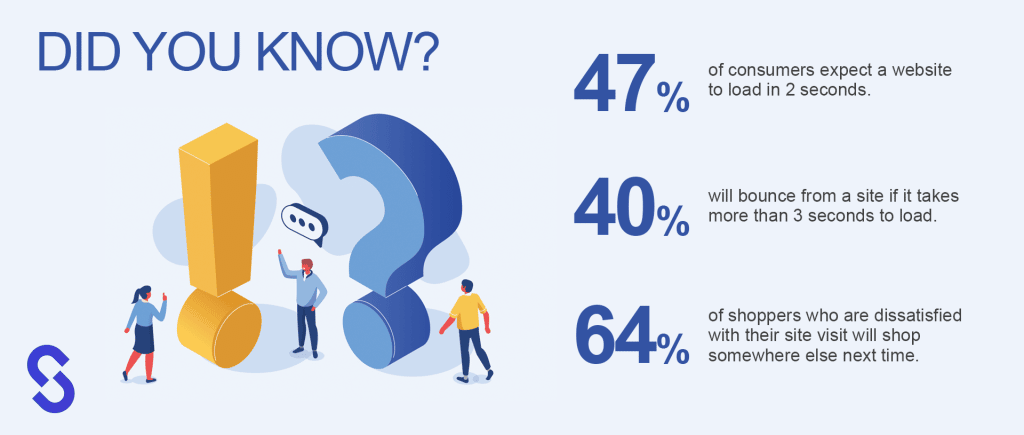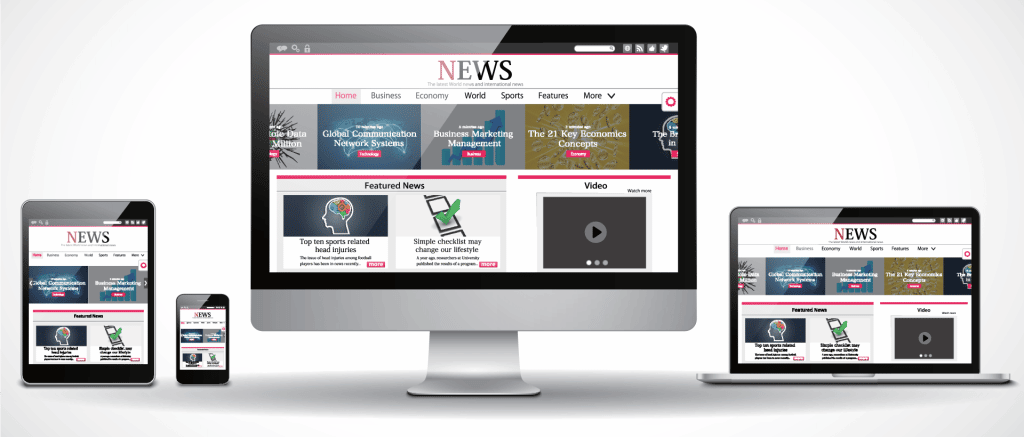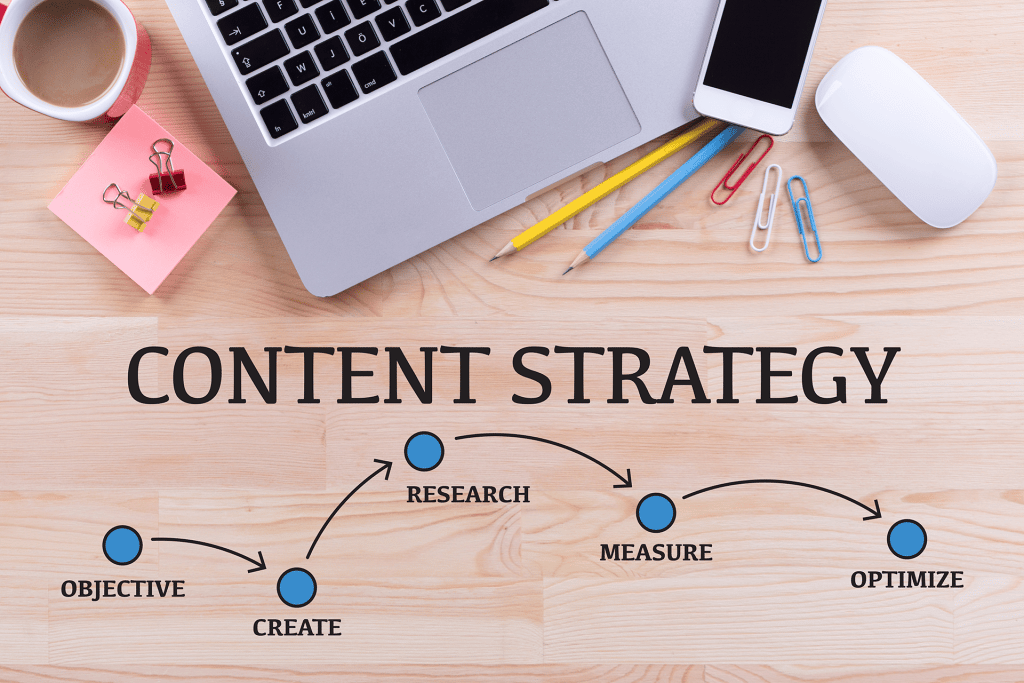When was the last time you updated your website? If you can’t remember, it might be time for a redesign. In today’s day and age, having an outdated website is the equivalent of having a storefront with peeling paint and a “going out of business” sign.
Not only will a new website design give your business a much-needed facelift, but it’ll also ensure that your site is able to keep up with the ever-changing landscape of the internet. That way, you can rest assured knowing that your website is working as hard as you are to attract and retain customers.
You may think that your current website is serving its purpose, but we’re about to give you a list of reasons why it’s probably due for a redesign, so keep reading to see if any of them apply to your business.
How Often Should You Redesign Your Website?
Before getting into why you might need a website redesign, it’s important to understand how often you should redesign your site. Ideally, you should aim to redesign your website every 2-3 years.
During that period, it’s highly likely that new UX trends will emerge, new technologies will be developed, and your business will change in some way, shape, or form. Of course, that’s along with the always-changing expectations of consumers. As such, it’s essential to keep your website design up-to-date to ensure that it’s able to meet the needs of both your business and your customers.
So if it’s been over 3 years since your last website redesign, or if you can’t even remember when your site was last updated, it’s definitely time to start thinking about making some changes.
10 Reasons Why You Need a Website Redesign
Apart from the general rule of thumb that you should update your website every 2-3 years, there are a number of specific reasons why you might need to redesign your site sooner rather than later. Here are the 10 main ones.
1. To Improve Your Website Security
If your website was designed more than a few years ago, there’s a good chance it’s not as secure as it could be. Over time, new security threats emerge, and if your site isn’t updated to address them, you could be putting your business at risk.

For example, if your website doesn’t have an SSL certificate, it’s not secure. This means that any information that’s entered into your site (such as credit card numbers or passwords) could be intercepted by third parties. Not only is this a major security risk, but it could also lead to your website being blacklisted by Google, which would be disastrous for your business.
In today’s day and age, even the biggest and most successful companies have been hacked, so it’s important to take website security seriously. A website redesign is a perfect opportunity to address any security concerns and ensure that your site is as secure as possible.
2. To Enhance Your Website Performance
If your website is slow or unreliable, it’s going to turn potential customers away in droves. Actually, 47% of consumers expect a website to load in 2 seconds at the very most, and 40% will bounce from a site if it takes more than 3 seconds to load.

Not only that, but slow loading times can also negatively impact your search engine ranking since Google uses site speed as a ranking factor. In other words, if your website is slow, you’re not only losing potential customers, but you’re also making it harder for them to find you in the first place.
There are a number of things that can cause slow loading times, such as large images, outdated code, or too much Flash animation. A website redesign is your chance to take a close look at your site’s performance and make the necessary changes to ensure that it loads quickly and efficiently.
3. To Create a More Mobile-Friendly Experience
If your website is difficult to navigate or doesn’t offer a great user experience on mobile devices, it’s going to frustrate potential customers, which will lead them to take their business elsewhere. That’s a huge missed opportunity for your business, especially since more than 58% of all web traffic now comes from mobile devices.

A few years back, it wasn’t essential for businesses to have a mobile-friendly website since the vast majority of web traffic came from desktop computers. However, times have changed, and now it’s more important than ever to offer a seamless experience across all devices.
For that reason, a website redesign can transform a dated and difficult-to-use website into a modern and user-friendly one optimized for all devices. This won’t only improve the experience for your customers, but it could also increase sales and conversions.
4. To Boost Your Website’s SEO
If your website wasn’t designed with search engine optimization (SEO) in mind, it won’t perform as well as it could in search engine results pages (SERPs). This is especially common among older websites that were created before SEO was as important as it is today.
There are a number of things that can impact your website’s SEO, such as your site’s structure, the use of keywords, the quality of your content, your link-building strategy, and your page loading times. A website redesign empowers you to address all of these factors and ensure that your site is as optimized as possible for search engines.
5. To Modernize Your Website Design
If your website is outdated, it could give off the wrong impression to potential customers.
First impressions are incredibly important, and if your website looks like it was created a decade ago, people will assume that your business is also outdated. A lot has changed in web design since the early 2000s, and what might have looked cutting-edge back then looks dated and unprofessional now.

A website redesign is your chance to modernize your site’s design and give it a fresh, new look that reflects the current state of web design, which is minimalistic, clean, and responsive. Not only will this make your site look more professional, but it will also improve its functionality and performance.
6. To Increase Your Sales and Conversions
If you’re not happy with the number of sales or conversions you’re getting from your website, a redesign could be the answer.
There are a number of things that can impact your website’s sales and conversion rates, such as your site’s design, the quality of your content, your call-to-actions, and your overall user experience.
Maybe your pages don’t have enough calls to action, or maybe you don’t have a blog or a content strategy, or maybe your site just isn’t designed in a way that’s conducive to sales. Through a site audit, you can figure out what’s not working and then use a website redesign to fix those issues and watch your sales and conversions increase.
7. To Align Your Website With Your Brand Identity
Not too long ago, brand consistency wasn’t that much of a big deal, so businesses could get away with having a website that didn’t match their brand identity. But in today’s competitive market, it’s more important than ever to have a cohesive and consistent brand identity across all of your marketing channels, including your website.
Your website should be an extension of your brand, and if it’s not, then it’s time for a redesign. If your customers find you on social media and then visit your website, they should see the same colors, fonts, logo, and overall aesthetic. This will help create a seamless experience for your customers and also make your brand more recognizable and memorable.
Otherwise, you run the risk of confusing your customers and hurting your brand’s reputation, leading to a loss in sales and conversions. That’s why 63% of employees say that brand consistency is a key factor in whether or not a deal is closed, and 50% of companies say their customers expect a consistent experience across all channels.
8. To Give You More Control Over Your Website
Gone are the days when businesses had to rely on web designers and developers to make even the smallest changes to their websites. With today’s content management systems (CMSs), businesses can easily make site changes without coding knowledge. And who wouldn’t want that?
If you’re not happy with how much control you have over your website, then a redesign is the perfect opportunity to switch to a CMS that will give you the power to make the changes you want, when you want. A content management system will also allow you and your team to easily create and publish new content without relying on anyone else whenever you need to make a change or add something new.
9. To Update Your Content Strategy
Your business has probably changed a lot since you first created your website, and as your business has changed, so should your content. That’s why one of the main reasons businesses redesign their website is to update their content strategy.

Your website’s content should be aligned with your business goals, and if it’s not, then it needs to be updated. For example, if you want to increase brand awareness, your content should be focused on top-of-the-funnel keywords. But if you want to increase sales and conversions, your content should be focused on bottom-of-the-funnel keywords.
A website redesign allows you to take a step back and assess your current content strategy and make changes accordingly based on your sales funnel.
Not to mention, if you’ve expanded your product line or services since you first created your website, then your content needs to be updated to reflect that. If you haven’t updated your site’s content in a while, it’s probably time for a refresh.
10. To Create a Better User Experience
Finally, the user experience (UX) is the biggest reason why you should redesign your website – period. Your website’s UX includes everything from how easy it is to navigate your site, how fast your pages load, and how well your site works on mobile devices, all the way to accessibility and privacy.
And if your UX isn’t up to par, you’re going to lose customers. In fact, 88% of consumers are less likely to return to a site with bad UX. Plus, with Google’s constant UX updates, it’s more important than ever to have a website that provides users with a great experience.
So if your website hasn’t been redesigned in a while, there’s undoubtedly room for improvement when it comes to the user experience. A website redesign will allow you to create a site that’s not only easy for users to navigate and use but also provides them with the information they need quickly and efficiently.
And in today’s fast-paced world, that’s what customers expect and demand.
The Bottom Line
While it’s easy to prioritize other areas of your business over your website, it’s important to remember that your website is often the first impression potential customers will have of your business–and sometimes the only chance you have to make a good one.
It’s no longer enough to just have a website – you need a website that’s well-designed, user-friendly, and aligned with your business goals. If your website is outdated or isn’t meeting the needs of your business, then it’s time for a redesign.
A website redesign doesn’t have to be a huge, costly project. Oftentimes, making small changes can have a big impact. But however big or small your redesign is, taking the time to update your website will be worth it in the long run.
If you’re not sure where to start, contact our ShiftWeb team, and we’ll help you assess your current website and determine what changes need to be made to achieve your desired results.


